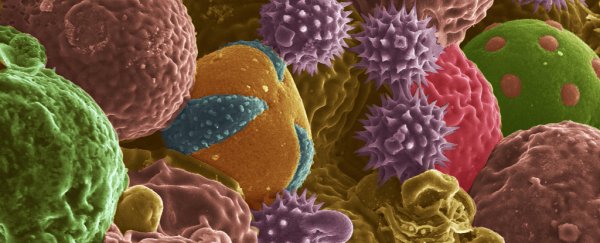Most of us probably don't think about pollen except for when we're cursing it for firing up our hay fever, but the fine grains are capable of being much more than just an allergen.
Scientists in Indiana have been investigating how pollens could be used as an alternative to graphite in today's lithium-ion batteries. While the research is very preliminary, early results suggest that nature-derived pollen structures could provide an efficient, renewable replacement to graphite, and one that's capable of delivering superior battery performance.
"I started looking into pollens when my mom told me she had developed pollen allergy symptoms about two years ago," said researcher Jialiang Tang from Purdue University. "I was fascinated by the beauty and diversity of pollen microstructures. But the idea of using them as battery anodes did not really kick in until I started working on battery research and learned more about carbonisation of biomass."
Batteries have two electrodes, called a cathode (positive terminal) and an anode (negative terminal). When the two are connected by a wire, electrons flow along the circuit formed, producing a current of electricity.
In most lithium-ion batteries – the kind that power digital devices like smartphones and notebook computers – the anodes are made from graphite. That's been the case since 1991 when lithium-ion batteries were first developed, and graphite's limitations – both in terms of storage and physical stresses – mean researchers are always on the lookout for a better replacement.
"Our findings have demonstrated that renewable pollens could produce carbon architectures for anode applications in energy storage devices," said one of the team, Vilas Pol.
Specifically, the researchers are interested in two kinds of synthetic pollens that they've derived from natural sources: bee pollen and cattail pollen. "Both are abundantly available," said Pol. "The bottom line here is we want to learn something from nature that could be useful in creating better batteries with renewable feedstock."
The researchers took natural samples of each variety of pollen and processed them in a chamber filled with argon gas at high temperature, using a procedure called pyrolysis. While bee pollen – seen in the image above – is a mixture of different pollen types collected by honey bees, cattail pollens all have the same shape.
The pyrolysis yielded pure carbon in the original shape of the pollen particles. Additional heating in the presence of oxygen then formed pores in the carbon structures to help increase their energy-storage capacity.
In testing with the pollen anodes, charging for 10 hours resulted in a full charge, and just an hour of charging resulted in more than half of a full charge. Cattail pollens performed better than bee pollen, delivering a high capacity of 590 milliamp hours per gram in testing at 50 degrees Celsius and 382 mAh/g at 25 degrees Celsius.
"The theoretical capacity of graphite is 372 milliamp hours per gram, and we achieved 200 milliamp hours after 1 hour of charging," said Pol.
It's early days, but the researchers intend to next study pollens in a full-cell battery with a commercial cathode. "We are just introducing the fascinating concept here," said Pol. "Further work is needed to determine how practical it might be."
The findings are reported in Scientific Reports.
